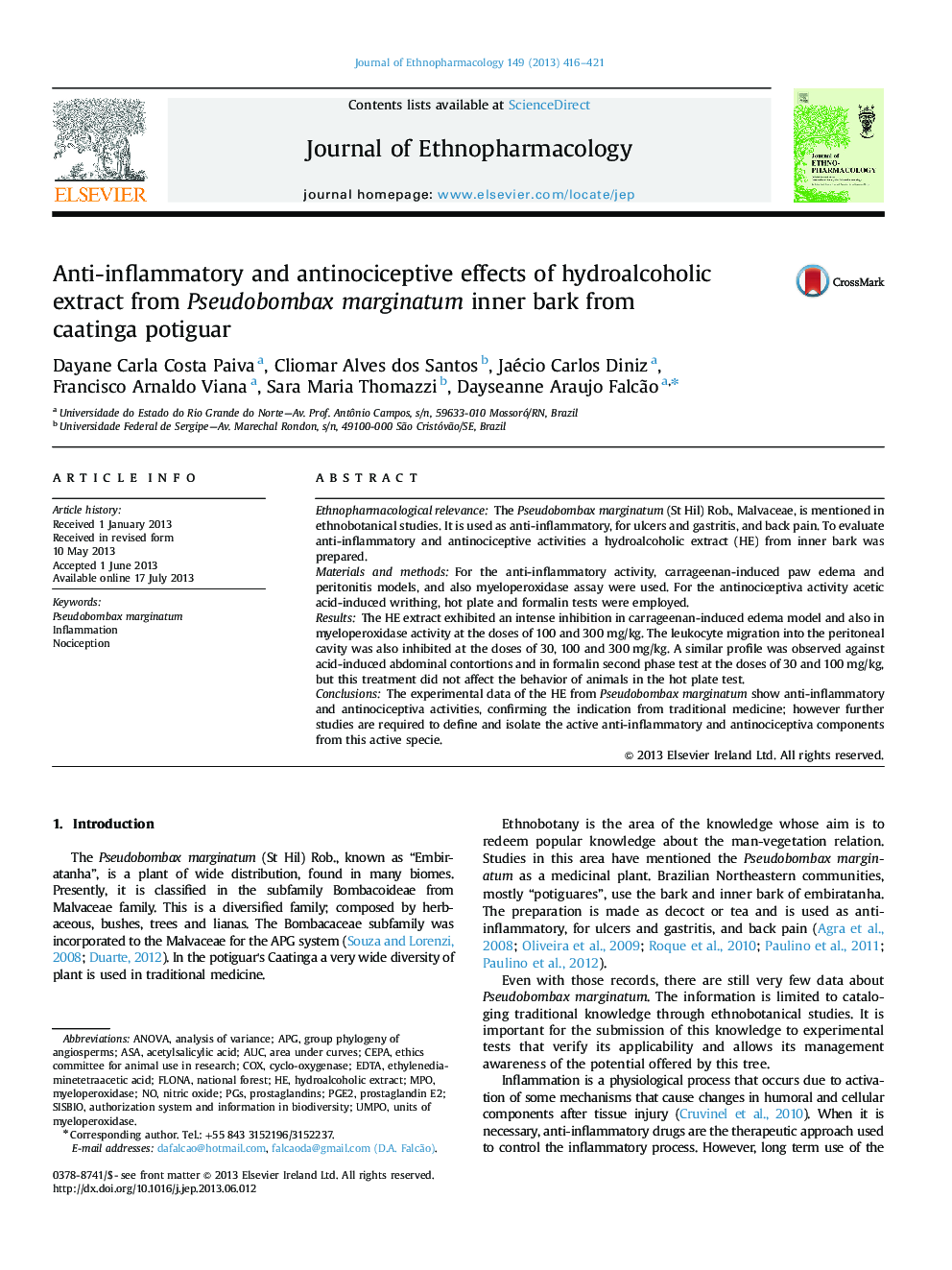| Article ID | Journal | Published Year | Pages | File Type |
|---|---|---|---|---|
| 5837195 | Journal of Ethnopharmacology | 2013 | 6 Pages |
Ethnopharmacological relevanceThe Pseudobombax marginatum (St Hil) Rob., Malvaceae, is mentioned in ethnobotanical studies. It is used as anti-inflammatory, for ulcers and gastritis, and back pain. To evaluate anti-inflammatory and antinociceptive activities a hydroalcoholic extract (HE) from inner bark was prepared.Materials and methodsFor the anti-inflammatory activity, carrageenan-induced paw edema and peritonitis models, and also myeloperoxidase assay were used. For the antinociceptiva activity acetic acid-induced writhing, hot plate and formalin tests were employed.ResultsThe HE extract exhibited an intense inhibition in carrageenan-induced edema model and also in myeloperoxidase activity at the doses of 100 and 300Â mg/kg. The leukocyte migration into the peritoneal cavity was also inhibited at the doses of 30, 100 and 300Â mg/kg. A similar profile was observed against acid-induced abdominal contortions and in formalin second phase test at the doses of 30 and 100Â mg/kg, but this treatment did not affect the behavior of animals in the hot plate test.ConclusionsThe experimental data of the HE from Pseudobombax marginatum show anti-inflammatory and antinociceptiva activities, confirming the indication from traditional medicine; however further studies are required to define and isolate the active anti-inflammatory and antinociceptiva components from this active specie.
Graphical abstractDownload high-res image (142KB)Download full-size image
